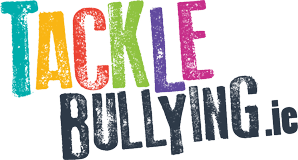LGBTQI+ Bullying is any intentional, targeted and repeated abusive behaviour of an individual because of their sexuality, and/or their gender identity.
Homophobic, biphobic and transphobic bullying are forms of bullying that victimizes lesbian, gay, bisexual, transgender, non-binary, queer and other individuals with different gender and sexual identities.
You don’t have to be LGBTQ+ in order to experience homophobic and transphobic bullying.
Those bullied – and those who partcipate in homophobic bullying – can be LGBT+ individuals, and also individuals who are not LGBT+.
This means that individuals do not have to be LGBT+ to experience the abuse.
Non-LGBT+ children of same-sex parents; non-LGBT+ friends and family; and individuals with political views that promote LGBT+ advocacy and inclusion have also experienced it.

How to Spot LGBTQI+ Bullying
LGTBQI+ Bullying can often result in low self-esteem; mental health problems; not wanting to go to school; poor academic performance; low mood; and an increased likelihood of self-harm.
People who experience homophobic, biphobic and transphobic bullying can experience:
- Fear of expressing identity.
- Reluctance to seek mental health support due to stigma.
- Suicidal ideation.
Signs to spot homophobic bullying can include:
- Verbal abuse (e.g. use of homophobic slurs),
- Physical abuse (e.g. hitting, pushing, kicking and threatening behaviour),
- Exclusion (e.g. segregated play),
- Cyberbullying (e.g. trolling, abusive messages, profile impersonation),
- Transphobia (e.g. dislike or fear of transgender individuals).
What Can My School Do to Prevent LGBTQI+ Bullying?
LGBTQI+ equality campaigns such as “Rainbow Week” are effective for raising awareness and promoting equality in schools. But they are not sufficient in tackling targeted homophobic and transphobic bullying incidents alone.
- Schools should have an inclusive, accessible and easy-to-understand Anti-Bullying Policy.
- Take screenshots of any abusive messages or content as evidence. Use the report and block functions of the social networking site (e.g. Facebook) or online game (e.g. Fortnite) and then report the cyberbullying to a parent/ teacher
- If there is a lack of action taken by the school or social networking site parents can contact the Ombudsman for Children or their local Garda station.
